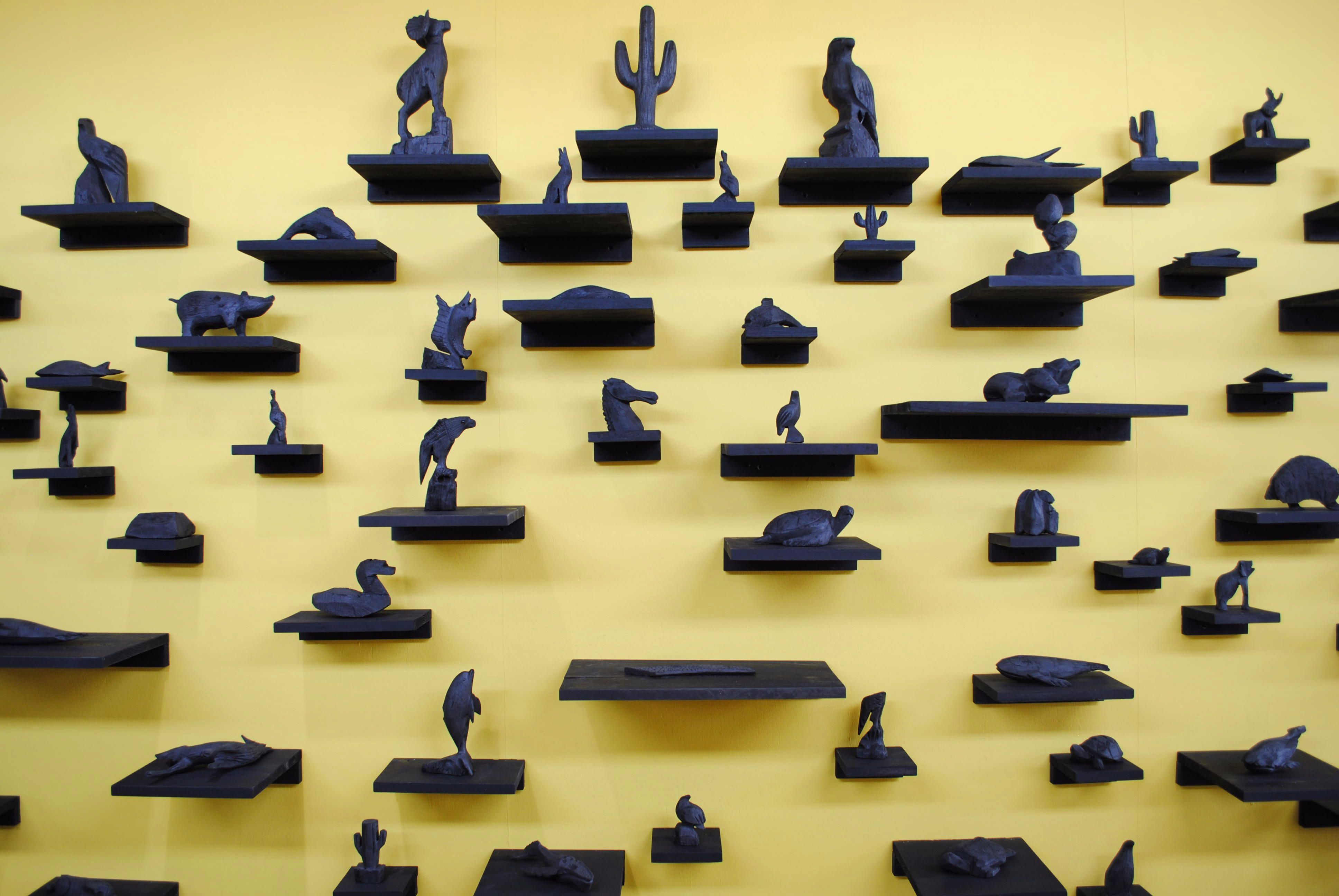Venues: University City; State High School #8332; #8358; Institute of Architecture, Design and Art; Ciudad Juarez Art Museum; Bombardier Recreational Products
Project Supported by Project Supported by the National Fund for Culture and the Arts (FONCA) and Patronato de Arte Contemporáneo







In contemporary Mexico and even more so in the Northern States, the act of tracking evokes an overwhelming and startling encounter with the other. However, the work of Miriam Salado, even in this context, allows us to read and return to a need for exploration that does not have such a heavy burden as that of dozens of families who want to know the whereabouts of a disappeared loved one. This does not mean that it is not relevant, this is an ethnoarchaeological investigation where the material culture of contemporary pre-industrial communities is called into question.
Miriam goes into the desert in search of animal bones that are studied and drawn to highlight their deterioration and wear; In the town of Miguel Alemán, 63 kilometers from Hermosillo, several workshops that work from the paralegal make figures of Palo Fierro (Olneya Tesota), cut down green trees or trees that are on private property. Miriam buys and exhibits these pieces after a carbonization process where many of them are unfinished, making a double representation visible: the great demand for a cultural identity turned into a souvenir exploits Olneya Tesota and in most cases, the carved animals are in danger of extinction.
These exploration and accumulation exercises reveal a detailed study of the erosion and devastation of various vestiges and memories that are affected both by the climatic nature of a dry and exhausting ecosystem, and by man's overexploitation of the ecosystem on material and cultural levels. : the sources of work and tradition of the Seris are displaced by non-indigenous artisans who use electrical machinery to create figures of Palo Fierro where crime and serialization are incurred that paradoxically ensure the survival of species as a mere allegory.
Miriam goes into the desert in search of animal bones that are studied and drawn to highlight their deterioration and wear; In the town of Miguel Alemán, 63 kilometers from Hermosillo, several workshops that work from the paralegal make figures of Palo Fierro (Olneya Tesota), cut down green trees or trees that are on private property. Miriam buys and exhibits these pieces after a carbonization process where many of them are unfinished, making a double representation visible: the great demand for a cultural identity turned into a souvenir exploits Olneya Tesota and in most cases, the carved animals are in danger of extinction.
These exploration and accumulation exercises reveal a detailed study of the erosion and devastation of various vestiges and memories that are affected both by the climatic nature of a dry and exhausting ecosystem, and by man's overexploitation of the ecosystem on material and cultural levels. : the sources of work and tradition of the Seris are displaced by non-indigenous artisans who use electrical machinery to create figures of Palo Fierro where crime and serialization are incurred that paradoxically ensure the survival of species as a mere allegory.